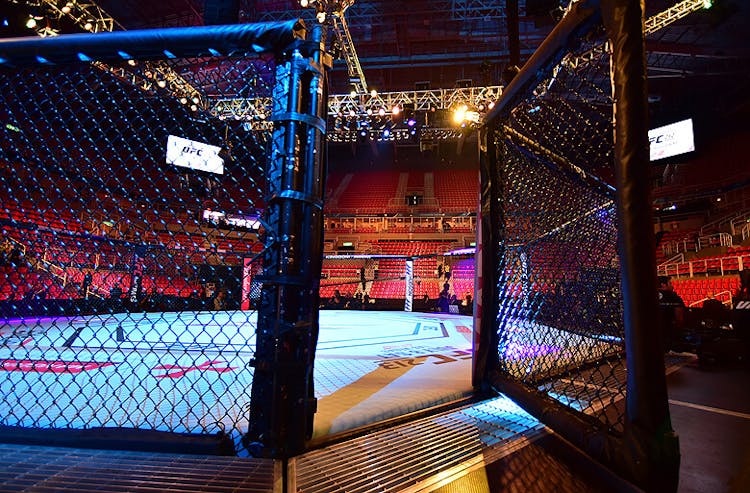Mixed martial arts has been one of the fastest growing markets in sports betting for over a decade, with promotions like the UFC drawing a large audience and expanding their product beyond once-a-month pay-per-view cards.
If you’re grappling with the MMA betting odds for the first time or just need to brush up on the basics, here are some simple tips and tactics to help you handicap MMA.
Sizing up styles
It’s all right there in the name: “mixed” martial arts. That means that fighters of varying styles and practices bring their best to the cage, creating some very intriguing matchups. Some fighters are more upright strikers, who prefer to stand and deliver blows. Others are skilled in wrestling and jiu-jitsu, and attempt to take the fight to the mat to ground-and-pound or submit an opponent.
Looking at how these styles matchup and any advantages they give one fighter over the other are good ways to find value in the MMA betting odds. And, much like in boxing, stance – orthodox or southpaw – should be considered when handicapping a fight, depending on the style of the combatants Southpaw fighters - left handed - can find themselves at an advantage versus orthodox fighters because often times they are not used to defending that type of stance.
Records and MMA math
A fighter’s record is one of the first pieces of data bettors look at when sizing up the betting odds, but it’s also already factored into the numbers. Records can sometimes be deceiving, as it’s impossible to find out the quality of opponents simply by looking at the wins and losses.
Bettors will want to take a deeper dive into those results, seeing that perhaps a fighter’s losses have come in closely-contested bouts against elite-level opponents while their opponent has built an impressive resume but has done so against inferior competition. Those fighters who have been tested are often more prepared and can adapt quicker throughout the course of a fight than one that has yet to be really challenged.
Often times, bettors like to compare the record of two opponents and which foes they have won and lost against. Inside a particular weight class, there is a lot of crossover in terms of opposition. One fighter may have lost to a past opponent that their current foe has defeated. Plenty of fight fans want to do what is known as “MMA Math”: Fighter A lost to Fighter C, but Fighter B beat Fighter C. So Fighter B should beat Fighter A when they meet. That’s rarely the case and this thought process can mislead MMA bettors, taking attention away from handicapping styles and studying fight film.
Ring rust, injuries, and KOs
Mixed martial arts is a combat sport so it comes with its share of injuries. These can sideline a fighter for a few weeks, months, or even years. Bettors will want to look into how these injuries impact a fighter upon their return to the ring, getting as much information from training camp reports and the media. Some questions to pose yourself include: Does something like a knee injury impact their quickness in the ring and how dependent is that fighter on that injured area? Will their upcoming opponent look to exploit that injured area?
Injuries as well as contract negotiations and fight cancellations can put extended time between fights for some athletes. MMA bettors will want to consider the popular “ring rust” angle, seeing how that hiatus from in-ring action has impacted a fighter: Have they been training and sparring all year? Are they in shape? Does age play into this break? How has a fighter responded to extended time between bouts in the past?
Knockout losses can also have a similar effect on fighters. While they may not have suffered physical injury due to a devastating KO defeat, they can become damaged mentally. Fighters coming off a knockout loss can become extra cautious and lose their edge inside the octagon, drastically changing their approach and style. MMA bettors should also beware of these situations when capping a fighter coming off a bad KO.
Weight and reach
Like boxing, MMA has multiple weight classes and fighters will move up and down in weight depending on success and competition. Some fighters are able to cut and maintain weight better than some, while others – especially those moving down in class – have a harder time making it under the limit.
Bettors should be mindful of fighters that struggle to make weight and their progress leading up to a fight. Weigh-ins are scheduled the day before a fight and those close to missing the cut can go through drastic measures to make sure they don’t tip the scales, including over training, starving and dehydrating themselves. Late weight cuts can leave those fighters drained before the bell even rings.
Some fighters walk around much heavier than their designated weight class and can quickly bulk back up after a weigh-in, giving them an advantage against possibly smaller foes. Bettors should always be mindful of a fighter’s true weight class and that of their opponent.
Reach – the length of a fighter’s arm – is another key factor in handicapping MMA betting odds. A fighter with a longer reach can connect on more strikes without putting themselves too close to an opponent. Mismatches in reach should be stacked up with style matchups, finding strikers who can use their longer reach to land shots and limit their opponent’s chances.
How to handicap MMA betting odds
MMA bettors will want to look at fight styles, records and opponents, weight and reach before taking a swing at the odds for UFC and other MMA events.




















